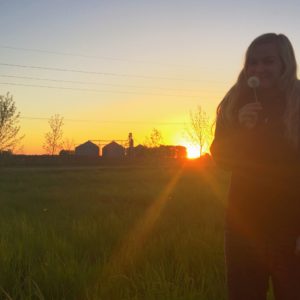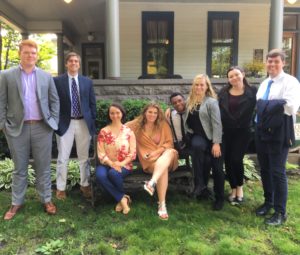So it is over. My time in Iowa is over. For me its weird to think the 21 days could have gone by so quickly, but had such a large impact. Right now I’m sitting on a couch some 1,000 miles away from Iowa, and I’m drinking a coke that is filled with high fructose corn syrup. This seems a very appropriate spot to be in to reflect on my time in Iowa.
First things first numbers. So I thought no good reflection would be good without some fun numbers. The first one is 4500. This is approximately the number of miles that we drove in a while Chevy 12 passenger van with Texas license plates. To put that into perspective a trip across the U.S. is less then 2800 miles. Averaging 75 miles per hour we spent 60 hours in that van. In doing our intrepid quest around Iowa we did any and everything you can imagine form poking our heads into Minnesota to randomly stopping at John Wayne’s birth place. Along the way we also actually did learn a few things too. The next number is 3. This is the number of houses we all stayed at during our time in Iowa. HN convinced 3 different households to let total strangers invade their space and live there for 3 weeks, and they were all extremely warm and welcoming. Without a missed beat we were brought in like long lost family members, and because of this we got to meet true Iowans. In this number I have to include our wonderful cooks. Now Diane and Staci are two of the best cooks I have ever come across (this is obviously excluding my mom, she’s still the best). Not only were they talented cooks, but they truly made us feel like their kids. The last number is 8. This one is pretty obvious. There were 8 of us that ventured to Iowa to partake in this unknown adventure. I like to think that over our 3 week time period we became pretty good friends, and we got to learn a lot about each other too. To all of my travel mates I think that you all helped make this experience as good as it was.
Now on to the actual reflecting part of this. Looking back on my time in Iowa all I can say is that it was a lot. It was a lot in the idea that we meet with a lot of people and learned a lot of new things. Over our 21 days there we meet with well over 25 different people and each one had a different piece to add to the Iowa story. Iowa was a lot in the idea that we just learned a lot. Going into this trip I now know that I knew nothing about what farming is like today. From small 2 wheeled tractors to a sprayer that stands 6 feet of the ground and has a 120 foot arm I got to see it all. We also saw all of the politics and programs that make it possible for modern day farms to still exist. Finally Iowa was a lot in the sense that it made me think a lot. Everyday my perceptions of how our food was produced changed, and that also led to may different ethical and practical discussions that I am still trying to wrap my head around. Iowa showed me that there is a lot more to consider when going to the grocery story and buying your weekly groceries, and I’m still trying to answer the questions that have arisen from our journey.
As HN would tell our different presenters we could have gone to Tokyo learn about the architecture, or gone to Cuba and smoked cigars, or gone to Italy and drink wine while eating fine meats and cheeses, but instead of all of those options we chose to come to Iowa and learn about farming. I for one can say that I definitely made the right choice, and I know none of the other trips would have made change my world views like Iowa did. The only fitting thing I can say is thank you Iowa for opening my eyes to what farming is and thank you HN for being our autocratic cruise ship director during our wonderful 21 days in Iowa.



